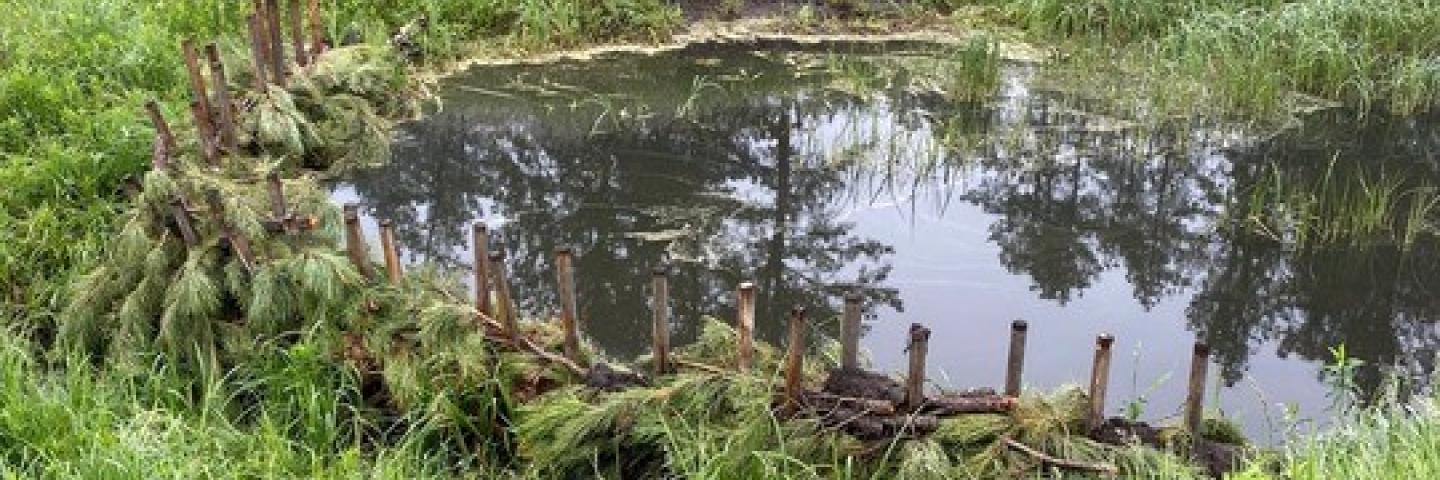(Don't) Leave it to the Beavers

Written by Michael Beck, Public Affairs Specialist in Rapid City
NATURAL RESOURCES CONSERVATION SERVICE, Rapid City, S.D., October 8, 2024 — Artificial beaver dams, or beaver dam analogs (BDAs) are a newer technique in stream restoration being used in South Dakota (SD). Beavers have proven to be instrumental in maintaining the health of watery ecosystems in SD. Through the creation of BDAs, some of the benefits of beavers can be replicated.
The BDAs are essentially man-made beaver dams, that act much as a natural beaver dam would. Over the past four years, a group of state, federal, non-governmental organizations, and private groups have installed almost 60 BDAs around the Meeker Ranch area which is by Custer. This area hosts two small creeks, which at one time, were home to a significant beaver population. Over time, the beaver population has dwindled and left a hole in the wetland and riparian ecosystems.
Reintroduction of beavers into an area can be challenging, but the benefits they bring can be approximated through simple methods of building BDAs. The instructors emphasized that there is not a best practice standard for building them, but demonstrated on the tour were two methods used locally.
Much like a traditional beaver dam, BDA's affect the stream and nearby area by forming a pool which slows the current, allowing sediment to settle, and catch floating debris. BDAs help native plant species thrive by partially filtering water as it flows through the structure, allowing more water to infiltrate the ground due to slower water flow.
"Our end goal is to help put some water into the soil, help with some of the aquatic vegetation and basically just make water subsist on the landscape for a little while longer,” said Kris Cudmore, an aquatic access and habitat biologist with South Dakota Game Fish and Parks.
The first method requires sinking posts into the streambed as anchors. Pine boughs are then woven between the posts to create the bulk of the dam. The layers of boughs and sticks are cemented together with mud from the streambed and bank. The top is finished with a final layer of boughs to help protect the structure from erosion due to precipitation.
The second method primarily replaces the pine boughs with other materials such as pine tree trunks, similar to the construction of a wall in a log cabin, using mud to cement the logs together. Then, the structure is topped with fresh pine boughs to protect the structure from weathering.
While the beavers return to various affected areas would certainly be preferred, man can duplicate some of the benefits of beaver inhabitation.
For additional information on BDAs, please check out this recent SDPB article about additional work in the Black Hills, a link to the BDA manual, and the South Dakota Stream Guide.
For more information, please contact your local service center.
#

